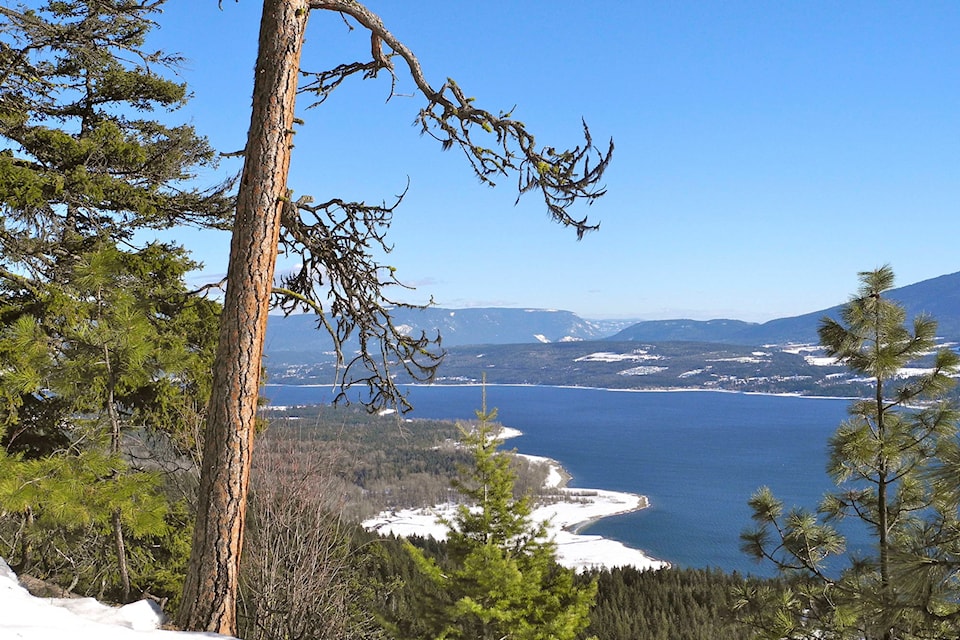One positive result of the pandemic is that because we are forced to stay home, many of us are gaining a greater appreciation of our home place.
Modern day humans have become hooked on constant stimulation by endless distractions, whether from screens, games or travelling to new places. Now, with the travel option gone, people are flocking to the local trails where they can experience the beneficial power of nature.
There are many books and studies written about the benefits of walking in forests, including the 1984 classic, The Biophilia Hypothesis by Edward O. Wilson, that describes how humans possess an innate need to seek connections to nature. The Japanese practice called shinrin youku, or forest bathing, is a proven therapy that reduces stress, increases happiness, frees up creativity, boosts recovery from illnesses and lowers heart rate and blood pressure.
A recent discovery for me was learning about the medicinal values of breathing in the forest aroma that is filled with pinene aerosols. These chemicals flow from our lungs into our circulatory system where they boost our immune systems. Indigenous peoples were well aware of the antibiotic and antiviral properties of trees and utilized the components in their medicines.
Read more: Volunteers step up during pandemic to work on Shuswap trails
Then, of course, there are the psychological values of experiencing nature, as there is nothing like a meditative meander through the woods to clear your mind of anxiety, inspire your creativity and feel more at one with the world around you.
While it is always fun to explore new places, there are many benefits to experiencing the same natural surroundings daily. If one lives within walking distance of a forest path, there is much joy in repeating one’s visits. Our need for stimulation from something new everyday can also be achieved by witnessing the changes that are constantly occurring, including the weather, the trail conditions, the wildlife and the seasonal variations, at different times of the day. As well, there is always something new to discover or become aware of during each visit by using all of our senses.
Read more: Popular Okanagan/Shuswap hiking guide updated
For the last few years, my wife Kathi and I have made it a goal to hike every day that we are not somewhere else on the trail behind our property up to the Lee Creek bluffs where there are extraordinary views of Shuswap Lake, from Copper Island to beyond Chase. Some days we have to slog through deep snow using snowshoes, or tread carefully on the ice using boot crampons. The hike can vary from one hour to three, depending on the conditions and how long we sit on a bench at the top to contemplate, chat and admire the view.
The focus changes daily, from inner thoughts to admiring the trees to observing the new growth in the spring. There are the very special trees that command our attention, including some massive old growth Douglas fir vets with their blackened thick bark from a long-ago forest fire, the giant leaners that defy gravity, the large, two-foot diameter fir that splits into two trunks just a few feet off the ground, the wizened, twisted and bent scrub tree and the wildlife-rich snags that are slowly decaying.
It is a steep, challenging climb up the hillside, but well worth it as these hikes are such a great way to exercise. Last year, I was able to do the hike 142 times and this year it could be even more this winter, given that warm temperatures deter us from skiing. One day, the Lee Creek Bluffs will hopefully become well-used by the public as part of the CSRD trail network, as it has been in the parks plan for more than a decade and the Trail Alliance has prepared the initial design.
We are privileged to live in the Shuswap where there is so much accessible public land to explore and so many diverse trails to enjoy. Despite the pandemic, the good times are always here to experience during any stroll into the forest.
newsroom@saobserver.net
Like us on Facebook and follow us on Twitter
